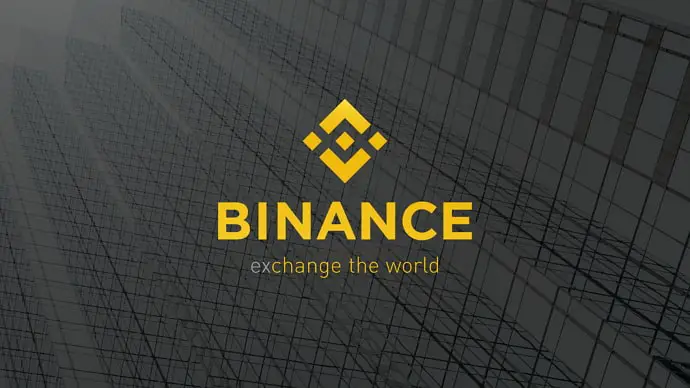MEXC and Binance are two cryptocurrency exchanges that are widely recognized for their expedient services and diverse selection of options. Nevertheless, the process of selecting between them can be time-consuming due to the numerous features they provide. This article will assist you in comprehending the distinctions between them in terms of trading systems, fees, and unique features. It provides a comprehensive comparison of MEXC vs Binance to assist you in determining which platform is most suitable for your crypto trading requirements.

Key Takeaways
- MEXC is the best exchange for traders who want to build a portfolio with multiple cryptocurrencies because it supports at least 1800 crypto assets.
- Binance is a go-to platform for advanced traders who want payment flexibility and advanced trading features.
- MEXC has a flexible KYC process, allowing users to trade up to 30 BTC daily without a mandatory KYC process.
(Start your MEXC P2P crypto trading journey using the promo code ‘1Q1BF‘ and earn up to $100 as a welcome reward, plus a chance to win over $5,000,000 in prize pools)
MEXC vs Binance: Overall Comparison
| Binance | MEXC | |
| Launched | 2017 | 2018 |
| Headquarters | Undisclosed | Singapore |
| Best for | Advanced trading features and flexible payment methods | Wide range of cryptocurrencies and early-stage investment opportunities |
| KYC verification | Mandatory | Optional for transactions lower than 30 BTC daily. |
| Cryptocurrency Listings | 500+ cryptocurrencies (varies by location) | 1850+ cryptocurrencies |
| Key Features | Futures trading, margin trading, VIP program | Margin trading, leveraged ETFs, launchpad |
| Deposit Methods | Visa/Mastercard, SEPA, SWIFT, P2P | Visa/Mastercard, bank transfer, P2P, third-party |
| Trading Fee (Spot) | 0.1000% makers and takers fees | 0.000% makers and takers fees |
| Margin Trading Leverage | Up to 125x | Up to 200x for certain coins |
| Mobile App | Android, iOS | Android, iOS |
MEXC vs Binance Fees
Fee structures can be the difference between profits and losses in crypto trading. For this reason, we will compare the deposit, trading, and withdrawal fees of two significant players, MEXC and Binance, as the most important criteria before making the decision.
Deposit Fees
MEXC charges zero deposit fees for most cryptocurrencies. Additionally, there are no deposit limits. Users can deposit as little or as much as they wish. However, a few exceptions, like USDT, incur a deposit fee.
Binance also offers zero deposit fees for cryptocurrencies. However, fiat currency deposits may have varying fees depending on the chosen deposit method and the currency involved.
Trading Fees
MEXC and Binance use a maker-taker fee model. Makers, who add liquidity to the order book by placing limit orders, typically enjoy lower fees than takers, who execute market orders and remove liquidity.
MEXC can be seen as the best zero-fee crypto exchange when this trading platform offers a very competitive trading fee to users. Particularly, the futures fees are 0.000% for makers and 0.020% for takers, while spot trading on MEXC charges 0.000% maker and taker fees.
Binance, on the other hand, implements a tiered fee structure based on 30-day trading volume. Regular users with a 30-day trading volume below 15,000,000 USD pay 0.1000% maker and taker fees for spot trading.
For USD-M Futures, there’s a 0.0200%/0.0500% USDT maker/taker fee and a 0.0180%/0.0450% fee for BUSD.
Coin-M Futures regular users pay a maker fee of 0.0200% and a taker fee of 0.0500%.
However, Binance provides an opportunity to reduce these fees through its VIP program, which comprises nine tiers. These tiers range from traders with over 1,000,000 USD in 30-day trading volumes to those exceeding 4,000,000,000 USD.
The table below compares MEXC vs Binance trading fees.
| Binance Trading Fees | Mexc Trading Fees | |
| Spot Trading | 0.1000% makers and takers fees | 0.000% makers and takers fees |
| Futures | USDT maker/taker: 0.0200%/0.0500%BUSD maker/taker: 0.0180%/0.0450%Coin-M maker/taker: 0.0200%/0.0500% | 0.000% makers and 0.020 % takers fees |
Withdrawal Fees
![MEXC vs Binance ([currentyear]): Is Binance Still the Best? 5 Deposit And Withdrawal Fees On Mexc](https://coinwire.com/wp-content/uploads/2023/12/deposit-and-withdrawal-fees-on-mexc-1024x512.png)
The withdrawal fees on MEXC and Binance differ depending on the cryptocurrency and the network utilized for the transaction. However, Binance and MEXC fees are often different even when the coin and network are similar on both platforms.
![MEXC vs Binance ([currentyear]): Is Binance Still the Best? 6 Deposit And Withdrawal Fees On Binance](https://coinwire.com/wp-content/uploads/2023/12/deposit-and-withdrawal-fees-on-binance-1024x512.png)
For example, when you want to withdraw USDT on MEXC, the withdrawal fee is 1 USDT on the BNB chain network. However, on the Binance exchange, the same coin on the same network has a withdrawal fee of 0.3 coins. To get a better understanding, you can visit the MEXC fee structure and Binance fee structure.
Winner: MEXC is better than Binance when this exchange offers a more competitive trading fee on both spot and futures market.
MEXC vs Binance Deposit Methods
Deposit methods and payment channels enable clients to deposit money into their accounts. Here’s a breakdown of supported deposit methods on Binance and MEXC.
MEXC’S Deposit Methods
![MEXC vs Binance ([currentyear]): Is Binance Still the Best? 7 Mexc Deposit Methods](https://coinwire.com/wp-content/uploads/2023/12/mexc-deposit-methods-1024x512.png)
MEXC provides a diverse range of deposit methods to cater to the needs of traders worldwide. These methods include:
- Credit and Debit Cards: MEXC accepts Visa and Mastercard payments. However, Visa and Mastercard on MEXC have regional restrictions.
- Global Bank Transfer (SWIFT): MEXC supports global bank transfers via SWIFT. This option allows users to transfer funds from their bank accounts directly to their MEXC accounts.
- P2P Trading: Peer-to-peer (P2P) trading on MEXC supports 30 payment methods, including MoMo, Shopeepay SEA, and Zalo Pay.
- Third-Party Payments: MEXC partners with third-party providers such as Simplex, Banxa, and Mercuryo to provide additional deposit options.
Binance’s Deposit Methods
![MEXC vs Binance ([currentyear]): Is Binance Still the Best? 8 Binances Deposit Methods](https://coinwire.com/wp-content/uploads/2023/12/binances-deposit-methods-1024x576.png)
Binance offers a comprehensive suite of deposit methods, including:
- Credit and Debit Cards: Binance Users can make payments using Visa cards.
- Binance P2P: Binance’s extensive P2P platform supports over 700 payment methods, including Visa and Mastercard, in-person cash payments, bank transfers, SEPA, SWIFT, Sofort, and iDEAL.
- Fiat Currency Deposits: Users can deposit fiat currencies directly into their Binance accounts using various methods, including SEPA, SWIFT, and local payment methods tailored to specific regions. However, Binance does not support Gibraltar or Overseas France for SEPA, and bank transfers through SWIFT are not generally supported.
- Third-party Providers: Binance users can access Banxa and Simplex
Winner: Binance has a broader range of payment options under each category. For instance, P2P on MEXC supports 30 deposit methods, while Binance P2P trading can support 700 methods.
MEXC vs Binance: Features
Binance and MEXC each have distinct features. Let’s explore them below.
MEXC’s Main Features
![MEXC vs Binance ([currentyear]): Is Binance Still the Best? 9 Mexc-Overview](https://coinwire.com/wp-content/uploads/2023/10/mexc-overview-1024x342.png)
Currently, MEXC is also considered the top crypto exchange for margin trading. This cryptocurrency exchange offers leverage trading options of up to 125x. It also includes an automatic trading mode and trading bots that streamline the borrowing and repayment processes. Additionally, MEXC has a margin call mechanism that activates when a margin account drops below a specified level, protecting traders from significant losses.
Leveraged Exchange Traded Funds (ETFs) are another highly favored feature on MEXC. These ETFs are designed to amplify the returns of an underlying asset. They are a popular investment strategy on the platform. MEXC offers 3x long (3L) and 3x short (3S) positions, enabling traders to enhance their gains potentially.
MEXC exchange is popular for its MEXC Launchpad, which allows users to participate in Initial Exchange Offerings (IEOs) of new cryptocurrency projects.
Binance’s Features
Binance, as the world’s largest crypto exchange, boasts a range of exceptional features. One of the most notable features is Binance’s futures trading platform, which allows traders to predict the future prices of cryptocurrencies in the derivatives market.
Binance Futures supports over 100 futures contracts, provides up to 125x leverage, and has a competitive fee structure, with makers typically paying around 0.02% and takers about 0.05%, depending on the digital assets.
Another critical feature of Binance is liquidity farming. This passive income strategy allows Binance users to supply liquidity to pools and earn BNB rewards for enhancing the exchange’s liquidity depth.
Additionally, Binance is at the forefront of the crypto social trading movement. The exchange facilitates crypto trading by allowing users to copy the trades of more experienced traders. Its copy trading feature assists in smart portfolio management, enabling users to leverage the insights of seasoned and pro traders for their trading strategies.
Winner: Tie. Both MEXC and Binance have unique and competitive key offerings. While they are not entirely the same, both platforms can give traders a seamless trading experience.
MEXC vs Binance: Number of Cryptocurrencies
When we wrote this article, Binance offered over 500 cryptocurrencies for trading, with leading coins such as Bitcoin, Solana, XRP, Ethereum, and Cardano at the forefront.
However, the range of available cryptocurrencies can vary based on the user’s location. For example, Binance.US, the American exchange branch, provides access to around 160 cryptocurrencies.
On the other hand, MEXC currently supports over 1850 cryptocurrencies. This includes popular choices like Polygon (MATIC), Avalanche (AVAX), Chainlink (LINK), Polkadot (DOT), and PEPE, and regularly adds new coins.
Winner: MEXC supports more cryptocurrencies than Binance.
MEXC vs Binance: Customer support
MEXC and Binance offer customer support channels to address user queries and resolve issues.
Binance provides a comprehensive FAQ section and an automated bot to assist users. Additionally, live chat and email support are available. However, there have been reports of lengthy wait times for live chat assistance, particularly following mandatory identity verification procedures.
MEXC’s customer support is also available 24/7. While finding specific information through the search bar can be challenging, users can opt for live chat or email support. Additionally, MEXC encourages interactions through various social media platforms.
Winner: Tie. Both platforms have comprehensive customer support systems and multiple help channels.
Who Should Pick MEXC?
MEXC crypto exchange ranks as one of the top cryptocurrency copy trading platforms in the world. It stands out as an ideal choice for investors seeking a diverse range of new coins and investment opportunities, boasting a selection of over 1850 different coins.
MEXC is an ideal trading platform for those interested in futures trading, thanks to its deep liquidity and range of appealing features. It is especially suitable for users who appreciate a no-KYC process (Know Your Customer), offering easier access.
Moreover, MEXC enhances the trading experience by offering opportunities for passive income. Its loyalty program is tailored to reward regular users, and the affiliate program provides additional benefits to those who bring in new users through the invite system.
MEXC also provides a launchpad that makes it a convenient place to find early-stage blockchain companies to invest in. Collectively, these features position MEXC as a leading choice for engaged participants in the crypto exchange market.
MEXC Pros & Cons
Pros
- MEXC supports a wide range of cryptocurrencies, with over 1,850 cryptocurrencies.
- The user interface in MEXC is extremely intuitive, making it suitable for experienced traders and newcomers alike.
- No KYC is needed to trade.
Cons
- MEXC has worked hard to protect clients from future hacking attempts. However, security breaches in the past may cause concerns for some investors.
- MEXC is not available in the U.S.
Who Should Pick Binance?
Binance exchange is the best crypto exchange for advanced traders seeking various trading features and payment flexibility. Binance Futures offers some of the best swap prices, impeccable risk assessment, and a secure asset fund for traders who want to engage in derivatives trading, including perpetual swaps.
Binance crypto exchange is well known for its impressive spot market, futures, margin trades, and P2P markets. It also lists over 700 payment methods for P2P trading, increasing the ease with which traders can move their funds from one account to another in P2P markets.
Binance Pros & Cons
Pros
- Binance offers advanced trading features like derivatives trading services, liquidity farming, and crypto social trading
- Bmore supports 500 crypto coins to trade and fiat currencies
- It has a version of the crypto exchange available for traders based in the U.S.
Cons
- Binance International, the global version of the exchange, is not accessible in the United States. Instead, its counterpart, Binance.US, is available but comes with limited features and a smaller selection of listed cryptocurrencies.
- The KYC process on Binance can be complex, making it difficult for some users to gain account approval.
Conclusion: Is MEXC better than Binance?
The choice between Binance and MEXC is more than just a one-size-fits-all decision. From our comparison, it is clear that each exchange has unique offerings and weaknesses.
Identifying your specific needs and preferences is crucial to selecting the most suitable platform. If you’re a trader looking for a user-friendly platform offering a wide range of new cryptocurrencies and opportunities to invest in blockchain start-ups, MEXC would be the ideal choice.
On the other hand, if your preference lies with an exchange that provides comprehensive trading features and a variety of payment methods, then Binance would be more suited to your requirements.





 Bitcoin
Bitcoin  Ethereum
Ethereum  Tether
Tether  XRP
XRP  Solana
Solana  USDC
USDC  Dogecoin
Dogecoin  Cardano
Cardano  TRON
TRON